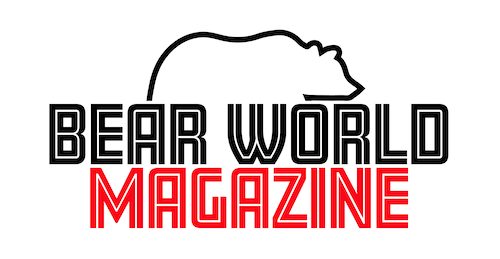Bear Tracks: Transbears
Trans pioneer Lou Sullivan was arguably the first transman to publicly identify as gay. He and I worked together long-distance in the late 1970s when he was an editor at GPU News Milwaukee and I was an aspiring gay writer living in West Germany. We became friends when we both moved to San Francisco and met as founding members of the LGBT Historical Society of San Francisco. Lou had always presented as a gay man, but he came out publicly as trans after moving to San Francisco. At the time I remember puzzling over why, if he was sexually attracted to men, he would identify as a gay man, instead of taking (what seemed to me at the time) the much easier path of being a straight woman. In fact, Lou was repeatedly denied sex reassignment surgery because of the medical community’s official homophobia—trans people were expected to adopt the stereotypical opposite-gender role. He was finally permitted to transition in 1979. Lou was largely responsible for the modem understanding of sexual orientation and gender identities as distinct and unrelated concepts. Queer theorist Judith Butler would later popularize this idea in her book Gender Trouble (1990). Having been infected with HIV in 1980, Lou wrote “I took a certain pleasure in informing the gender clinic that even though their program told me I could not live as a Gay man it looks like I am going to die like one.”

The history of the emergence of transgender identity is complicated. Individuals, such as jazz musician Billy Tipton (1914-1989) “passed” as male. (No Ordinary Man, the brilliant 2020 Canadian documentary about Tipton, offers an excellent introduction to the complex issues transpeople deal with.) Reed Erickson (1917-1992) informed “almost every aspect of work being done in the 1960s and 1970s in the field of transsexualism [sic] in the US.” After inheriting his family’s fortune in 1962, Erickson founded the Erickson Educational Foundation, becoming an activist and philanthropist in support of the LGBTQ movement, educating the medical profession about trans issues, and supporting transgender people. Michael Dillon (1915-1962) asserted that trans identity is innate and it can be treated through medical transition. Lou Sullivan is acknowledged for organizing and galvanizing the transmasculine community.
Transwomen are far more visible, relatively speaking, than transmen or otherwise transqueer folks. In 2016 Aydian Dowling, who identifies as an FTM* transgender activist, noted that the lack of visibility of transmen in the media is because many people “still see transgender women as men and transgender men as women,” a doubling down on the prejudice that queer men are “feminine.” Dowling has also pointed out that transmen are still not being seen and their stories are not being told. (To this end, transbear readers of this column are encouraged to submit their stories for inclusion in Bear Book III.) In recent times transmen in sports and in American television have become visible. Athletes include Harrison Browne (Canadian ice hockey player), Zdeněk Koubek (Czech track star), and Jay Mulucha (Ugandan basketball player). Three-dimensional portrayals of transmen and transmasculine men—roles played by transmen—are now emerging, mostly on the small screen. In a 2019 Time article Logan Rozos, Elliot Fletcher, and Ian Alexander were singled out for such distinction. Perhaps best known is Chaz Bono, who grew up on television as Chastity Bono, daughter of Cher and Sonny Bono.
In his 2000 round robin discussion “Lesbears and Transbears: Dykes and FTMs as Bears” (in Bears on Bears), Ron Suresha spoke with Bear Bergman (“butch .. with lots of boy streaks”), Drew Campbell (“FTM/transman”), Matt Rice (“FTM”), and Mike Hernandez (who identified at the time of Suresha’s interview as “transman and both/neither sex” and also a lawyer, chef, trans activist, and core member of the Bear History Project International central committee). Matt and Mike both commented on the fact that women “have boundaries,” unlike gay men, who are much freer to touch each other in a sexual manner in public places. As a bartender at the Lone Star, San Francisco’s original bear bar, Matt often felt uncomfortable being groped by patrons, especially before his chest surgery. He noted, nonetheless, that he found bears to be “more accepting of difference and understanding.” Transbear Taylor Leigh, Mr. Brighton (UK) Bear 2019, also stated he found more acceptance in the bear community than in the gay community at large.

Transbear masculinity extends to the leathersex community. Transleatherman Patrick Califia (once Matt Rice’s partner) was one of the “earliest champions of lesbian sadomasochistic sex.” He eventually found himself excluded from his gay family for speaking his opinions In 1999 Califia began his transition. Mike Hernandez, who is also a trans activist in the leather community, has called the “trans-fag-leather-bears …some of the last outlaws.” He remarked that “the Trans community is fairly ignorant about Bear culture, except for those who came from the leather community or who identify as queer in some way, shape, or form.” Bear World Magazine currently gives visibility to transbears, having interviewed Taylor Leigh (Mr. Brighton Bear 2019) and Trey ONYX, 2019 winner of the Mr. San Francisco Leather title. Interestingly, Taylor came out as trans before coming out as gay. He agrees that the bear community has been more accepting of him than the gay community at large.
*It is unclear whether Aydian Dowling identifies himself as FTM or if that was ascribed by his interviewer. As Mike Hernandez has pointed out, that while the term appears to be in disfavor by the younger generation of transmasculine folk, transmen who transitioned in prior generation still use the term. I want to thank both Mike Hernandez and Branwen Drew for their read-through and thoughtful corrections to this column.
Help Les K Wright in his quest to document bear history by joining the Bear History Project International where you and a group of like-minded individuals can exchange ideas and help to preserve bear history and culture.


















